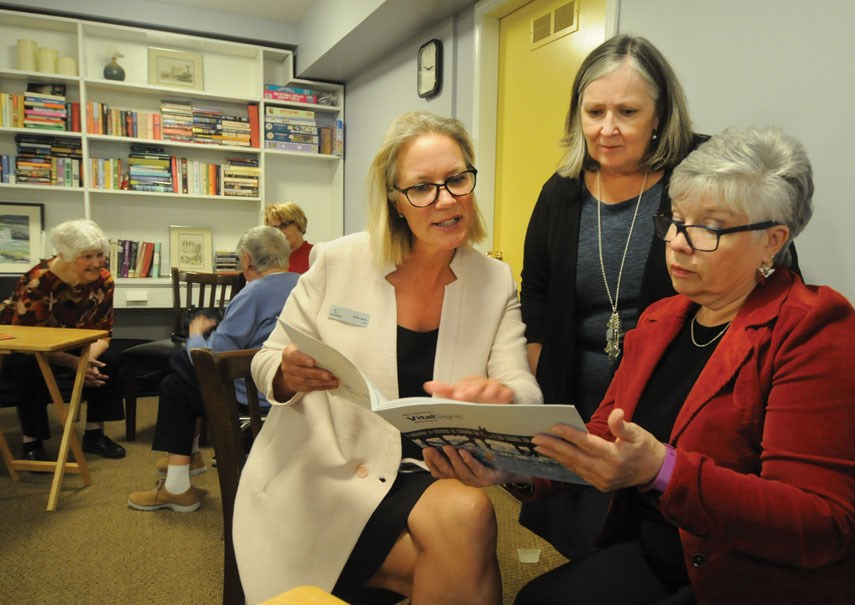West Vancouver is older, richer, and more ethnically diverse than it was only a few years ago, according to a new report by the West Vancouver Community Foundation.
But while some segments of the community are doing very well indeed, and contributing to the highest median incomes in the country, the middle class in West Vancouver is shrinking, according to the latest Vital Signs report, which looks at key socio-economic and demographic data to paint a snapshot of the community.
And those on the bottom of the pile are struggling more than ever with low incomes and lack of affordable housing, according to the report.
Among the “have nots” in West Vancouver, the report points to 14 per cent of West Vancouver households being in “dire housing circumstances,” spending at least half of their household income on shelter costs. Almost half of those people are seniors.
Among renters, 58 per cent spent more than 30 per cent of their income on rent – 10 percentage points higher than the Metro average.
More people than ever are also on the waiting list for subsidized housing in West Vancouver – numbers jumped from 96 in 2016 to 132 more recently.
Twenty percent of West Vancouver households also reported an after-tax income of less than $30,000.
“I refer to it as invisible poverty,” said Elaine McHarg, vice-president of philanthropy and partnerships for the foundation.
“Not everybody lives with the same privilege as others.”
On the other end of the economic spectrum, the rich in West Vancouver are apparently getting richer. Approximately 40 per cent of households have after-tax incomes of over $100,000 in West Van – almost double both the provincial average and the number who did five years before that.
As proof of that affluence, one in every 142 people in West Vancouver owns a luxury vehicle that costs more than $150,000 (compared to one in 577 people in Richmond and one in 615 in Vancouver.)
In between those two economic poles, however, the middle class is shrinking.
“We have a hollowing out in the middle that is only getting worse,” said McHarg.
Lack of affordable housing is a heavy contributor to that trend – which the Community Foundation has flagged in previous reports.
“West Vancouver continues to be on one of the least affordable communities in the Lower Mainland making it difficult to attract young families …” according to
the report.
Average monthly rent for a two-bedroom unit in West Vancouver was about $2,400 in 2018 and $3,620 for a three-bedroom unit.
About 70 per cent of West Vancouver’s workforce – including 90 per cent of municipal employees – come from elsewhere in the region.
Only a little over half of West Vancouver residents are in the workforce – a drop of 10 per cent in about five years.
Many of the people who aren’t working are likely retired – the percentage of the population between 65 and 85 grew three per cent in the past three years while the population aged 40 to 65 shrank by three per cent.
That presents a huge challenge for West Vancouver, because “a community includes more than the people who live there – it is also made up of the people who teach us, protect us, transport us, deliver our mail, and serve our coffee, as well as family members and others who care for us and visitors who are here to study, work or explore,” according to the report’s authors.
In also puts West Vancouver at the front end of worrying demographic changes including a rapidly aging population without enough caregivers to look after them, said McHarg.
The non-resident workforce, combined with limited transit, low density development patterns, most students being driven to school and through traffic heading to the ferries or up to Squamish and Whistler, has also helped contribute to worsening traffic congestion.
Children and teens, while making up a smaller percentage of the population in West Vancouver than they do in other communities also face special challenges in West Vancouver.
About 28 per cent of children in West Vancouver are arriving at kindergarten unprepared for learning, as measured by the Early Childhood Development Index, according to the report. Much of that is connected to recent immigration patterns and the need to support newcomers, said McHarg.
Changes brought by immigration are one of the big takeaways in the report about how West Vancouver is evolving and becoming more diverse, said McHarg.
West Vancouver’s total immigrant population is now 45 per cent of the population. Of these, 7 per cent are recent immigrants who arrived between 2011 and 2016.
That puts the population of newcomers in West Vancouver as the largest on the North Shore, compared to 38 per cent in the City of North Vancouver and 31 per cent in the District of North Vancouver.
Roughly 36 per cent of West Vancouver residents are visible minorities – up from 28 per cent in 2011.
English is now spoken in 62 per cent of homes, compared to 67 per cent three years ago.
Mandarin is spoken at home by about 15 per cent of the population while Farsi is spoken at home by about nine per cent, according to the report. (In comparison, the report noted in 1979 English was spoken in 90 per cent of West Vancouver homes.)



